Car review: French connection to Renault makes JMEV Elight a simple delight
Sign up now: Get ST's newsletters delivered to your inbox
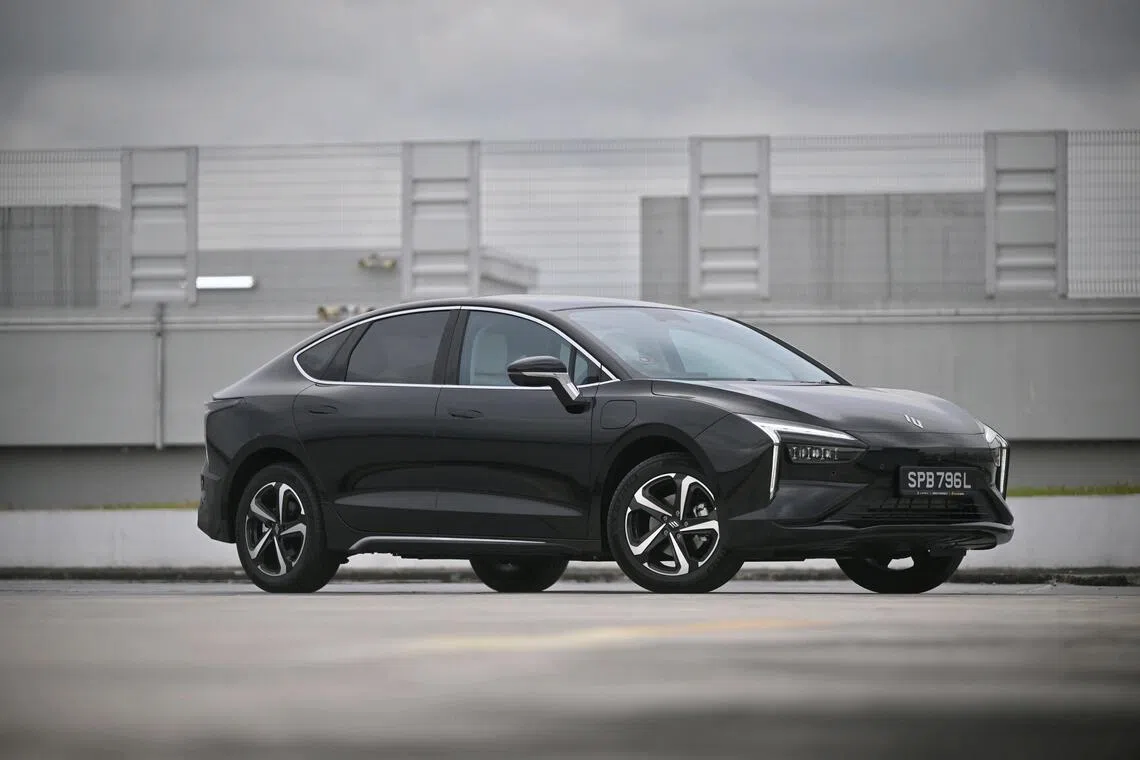
The JMEV Elight is a twin of the Renault Mobilize Limo.
ST PHOTO: ARIFFIN JAMAR
Christopher Tan
Follow topic:
SINGAPORE – French carmaker Renault has not launched any new model here in a long while. But its one-time Chinese joint venture company, Jiangling Group Electric Vehicle – JMEV in short – has just rolled out the Elight electric sedan.
Headquartered in Nanchang in China’s south-eastern Jiangxi province, the 10-year-old company does not rank among giants such as BYD or Geely. But its four-year-old association with Renault – which ended in 2023 when the French group divested its holding – had given the small Chinese start-up a much needed leg-up in technology, resources and quality processes.
The Elight is a rebadged Renault Mobilize Limo, a model the French manufacturer introduced in 2022 to target fleet operators. The Mobilize Limo was co-developed with JMEV.
Measuring 4,675mm long, 1,835mm wide and 1,480mm tall with a 2,750mm wheelbase, the Elight is between the size of the Toyota Corolla Altis and Tesla Model 3, which it resembles at first glance.
Its interior space is bigger than its overall dimensions suggest. You will find as much legroom and hip room in the rear as in some larger models. The car has a 410-litre boot, which is not deep but has a flat, squarish floor with minimal body intrusions. It has no frunk.
The cabin is unabashedly plasticky, with a standard of fit and finish surpassed by many cars. The cladding of its two-spoke steering wheel, for instance, exposes sharp edges – not ideal for a part which is in constant contact with the palms.
And the driver’s seat has a slight but noticeable protrusion which makes contact with my tail bone. It feels like I am sitting on a small object, but there is nothing there.
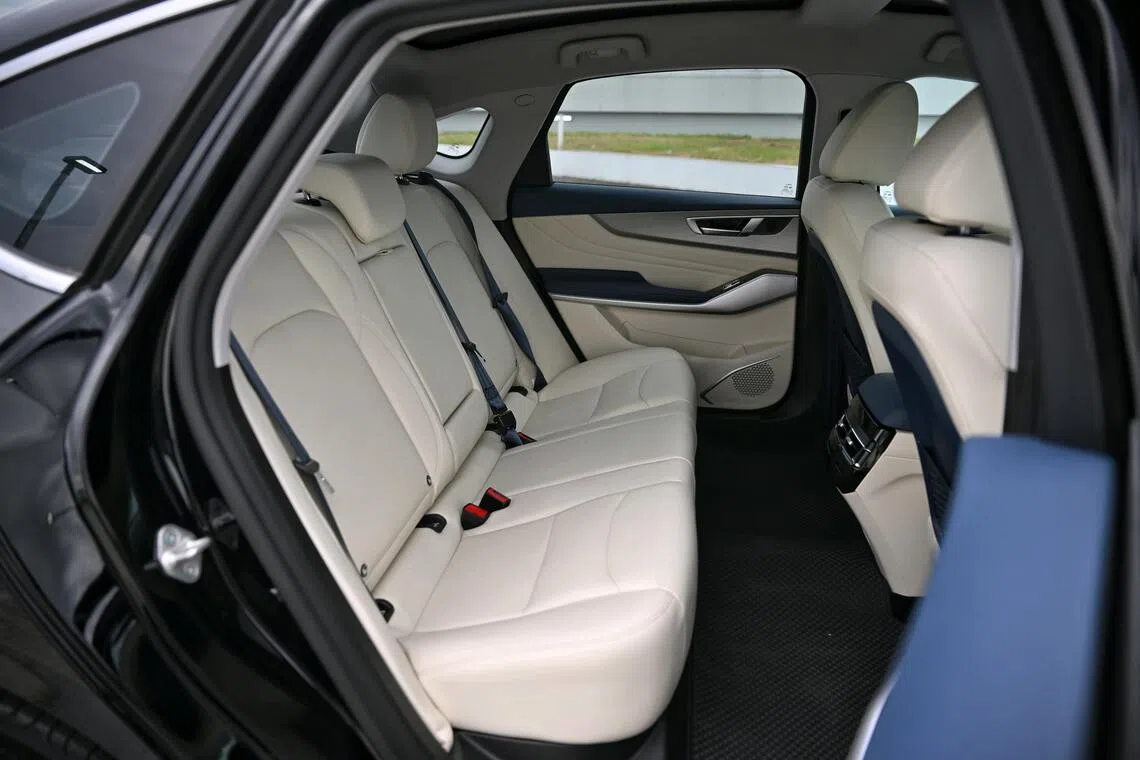
The second row has more space than expected of a car with a 2,750mm wheelbase.
ST PHOTO: ARIFFIN JAMAR
Otherwise, the car passes muster. I like its dual-tone dash, joystick shift lever and coated moon roof.
I also like the fact that the car is not overly techy. All the crucial and common functions have physical switches. Air-conditioner vents are manually adjusted, the glovebox retains a simple click-to-open button and interior door handles have not been replaced by newfangled electronic gizmos which come with hard-to-access emergency overrides.
On this front, JMEV is like BYD. Both do not go high tech for the sake of it. That, to me, is the sensible approach. And one which, in the long run, will lead to fewer technical issues.
Yet, the car has sufficient modern amenities. Android Auto works flawlessly, although connecting your phone to the car requires two steps instead of the usual one.
The car is equipped with a 360-degree reverse camera. And door locking and unlocking are proximity triggered (a lovely feature I first experienced in a Renault more than a decade ago).
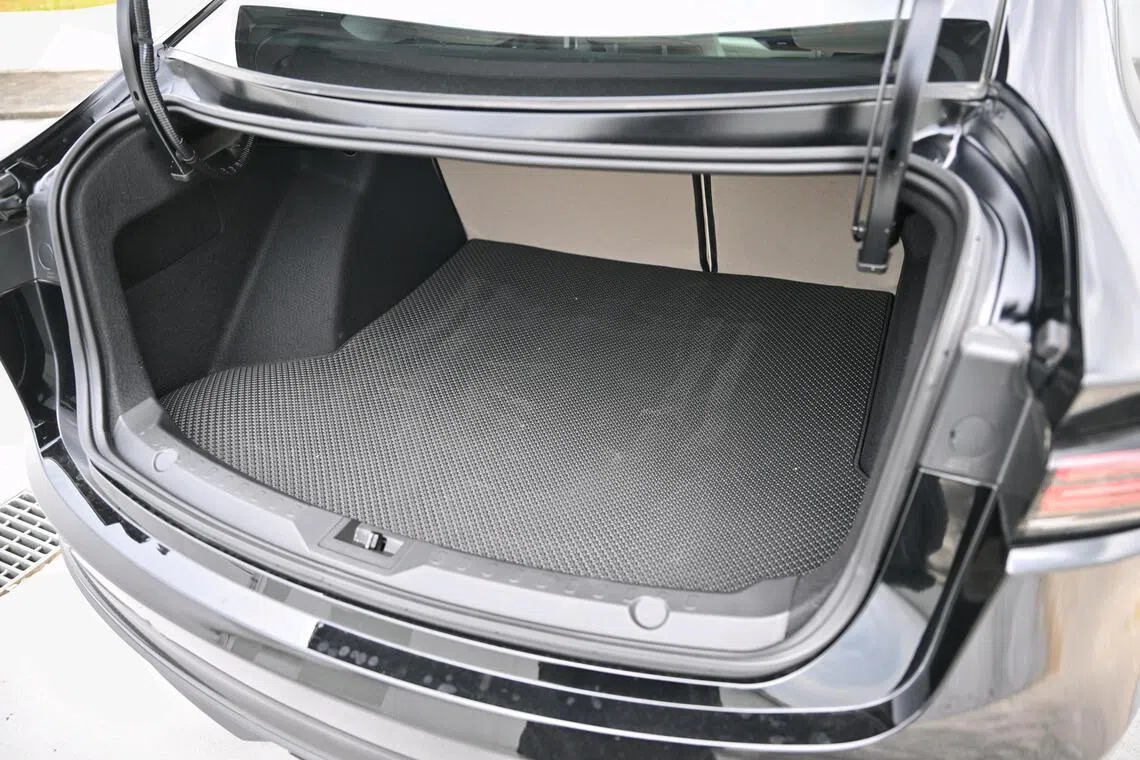
A 410-litre boot with a flat, squarish floor with minimal body intrusions.
ST PHOTO: ARIFFIN JAMAR
JMEV is restrained when it comes to frills on this entry-level variant. There is no seat ventilation, no seat position memory and its cruise control is not adaptive. But a storage unit below the centre armrest has an adjustable vent to receive chilled air from the car’s climate control.
On the outside, the car strikes quite a handsome pose. Strategically placed folds and creases set it apart from the jellybean silhouettes Chinese electric cars tend to subscribe to. The French influence on styling is evident.
Flush door handles which flick out like a jackknife as you approach are cool and practical – an improvement over Tesla’s mechanism. Still, I would not have minded conventional door handles either.
Door-mounted wing mirrors give the car another touch of sportiness. This position gives rise to better side visibility too.
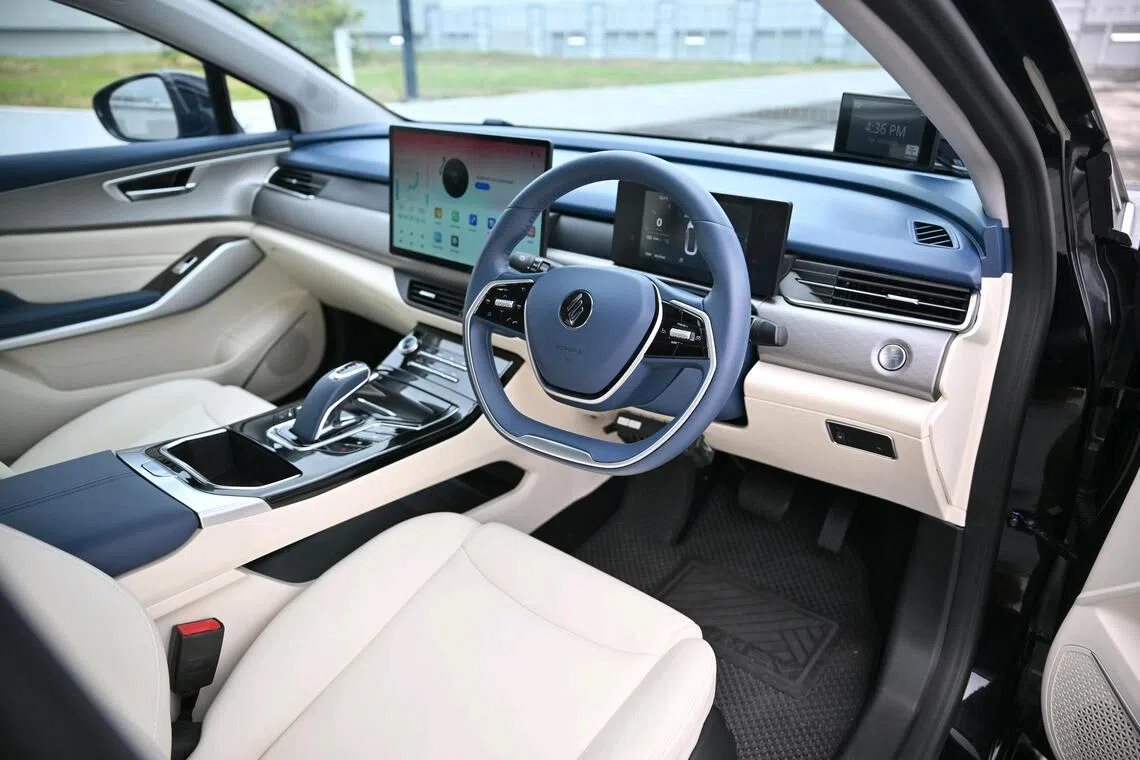
The cabin is not plush, but far from rustic.
ST PHOTO: ARIFFIN JAMAR
On the go, the Elight is delightful for a car with modest means. Its front-mounted motor puts out 108kW and 225Nm of torque to propel the car to 100kmh in 8.9 seconds and onto a top speed of 150kmh.
Yet, the car is rarely left wanting. Go beyond the first few degrees of dead space and the throttle becomes quite responsive. Acceleration all around is adequate and the car often feels quicker than its century sprint suggests.
Its compactness translates to manoeuvrability, especially in tight spaces like carpark ramps. Lane-changing requires less effort, which goes some way to making your commute less stressful.
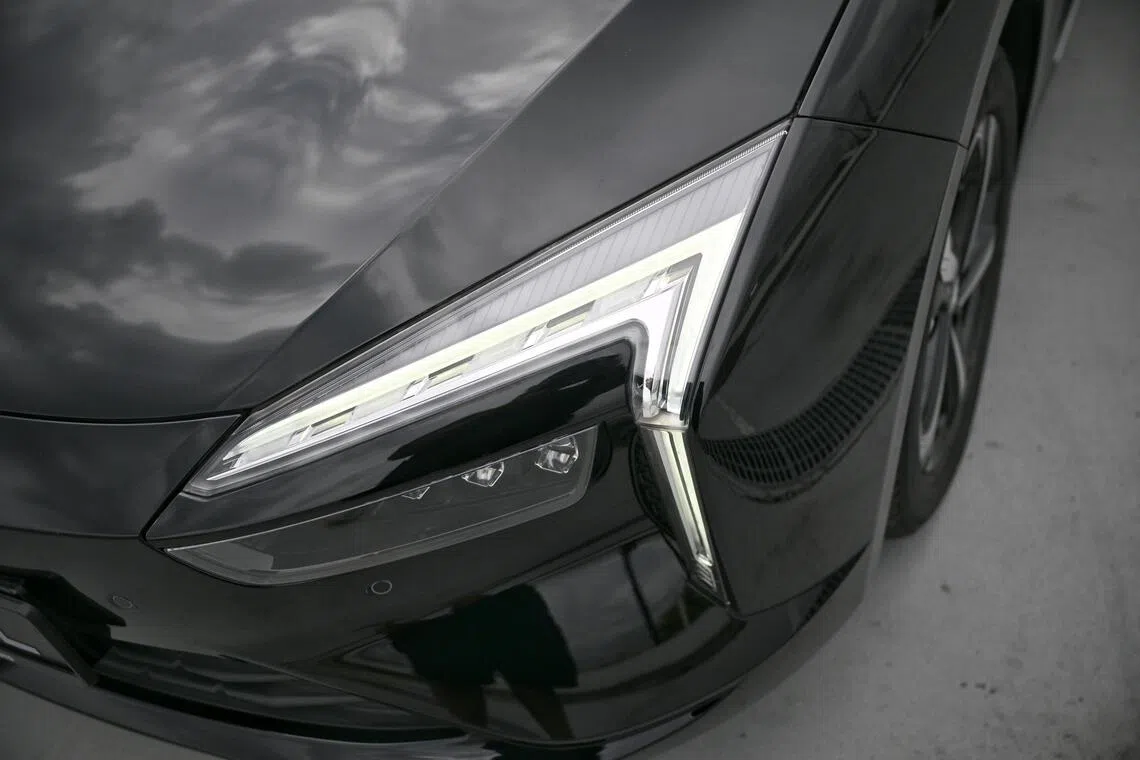
Chevron-shaped lamps give the Elight a sport countenance.
ST PHOTO: ARIFFIN JAMAR
Its suspension and brakes are calibrated for comfort. The car betrays hardly any heavy-footedness associated with electric cars. It sheds speed with minimal fuss, making it one of the most comfortable cars to drive in stop-start traffic. The trade-off is that it requires more pedal pressure to come to a stop from higher speeds.
Driven exclusively in Comfort mode, the test car averages 19.9kWh/100km, which is noticeably higher than its stated 16.2kWh/100km. This may be because the previous user drove aggressively and the car’s long-term consumption meter cannot be reset.
The only thing which is mildly irritating is an undefined ping which sounds like a soft engaged tone on your phone. It comes on and goes off inexplicably. If this can be disabled, the Elight will be more of a real delight.
JMEV Elight
Price: $268,888 with certificate of entitlement (COE) before applicable discounts
Motor: Front-mounted permanent magnet synchronous with 63kWh battery
Transmission: Single-speed automatic
Power: 108kW
Torque: 225Nm
0-100kmh: 8.9 seconds
Top speed: 150kmh
Power consumption: 16.2kWh/100km
Charging capacity: 7kW AC; 60kW DC
Agent: Valor Auto
Rating: ★★★☆☆
Comparable considerations
BYD Seal Dynamic ($277,888 with COE before discounts)
Substantially bigger than the Elight, but the BYD Seal Dynamic’s interior space does not commensurate with an increase in dimension. This pared-down rear-wheel drive takes 10 seconds to reach 100kmh and averages 17.5kWh/100km (tested). With a slightly smaller battery than the Elight, it has a Singapore range of 350km, compared with the JMEV’s 317km. Its suspension is a tad stiffer.
Polestar 2 Core ($249,000 with COE)
A dashing front-wheel drive with a 69kWh battery, the Polestar 2 Core is a Category B car with a 170kW motor and a 7.4-second century sprint. Its suspension set-up is similar to the Seal’s, while its boot has one of the largest usable spaces among compact models. Those who appreciate Scandinavian styling and efficiency should still consider this car.
Tesla Model 3 RWD 110 ($216,507 with COE)
This Category A Model 3 has a century sprint of 8.6 seconds, but its top speed is a respectable 201kmh. This allows it to outrun all the cars listed here. Its 60kWh battery gives it a real-world range of around 380km, based on a test drive in June 2024. But Tesla’s everything-on-one-screen approach is not for everyone.
Follow Christopher Tan on Instagram
@chris.motoring

